Easy to recognize song “drink your teeeeeeeee,” or sometimes just “teeeeeeeee.” Formerly called “Rufous-sided Towhee, but now two separate species – Eastern Towhee, and its western counterpart, Spotted Towhee.
-
Eastern Towhee
West Hartford, CT
May 24, 2009 ©John Schwarz
-
Eastern Towhee – female
Guilford Brush Dump, Guilford, CT
October 11, 2010 ©John Schwarz
-
Eastern Towhee – southeastern white-eyed race
Three Lakes NWR, FL
April 13, 2007 ©John Schwarz
-
Eastern Towhee – female
Guilford Brush Dump, Guilford, CT
October 11, 2010 ©John Schwarz
-
Eastern Towhee – southeastern white-eyed race
Three Lakes NWR, FL
April 2, 2005 ©John Schwarz
-
Eastern Towhee
Naugatuck, CT
May 30, 2007 ©John Schwarz
-
Eastern Towhee
Naugatuck, CT
May 27, 2008 ©John Schwarz
-
Eastern Towhee
Naugatuck, CT
May 30, 2007 ©John Schwarz
-
Eastern Towhee
West Hartford, CT
May 22, 2008 ©John Schwarz
-
Eastern Towhee
West Hartford, CT
May 22, 2008 ©John Schwarz
-
Eastern Towhee
Lyme, CT
May 27, 2013 ©John Schwarz


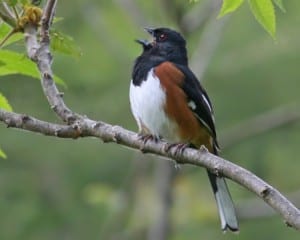
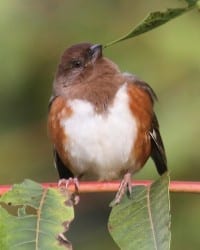
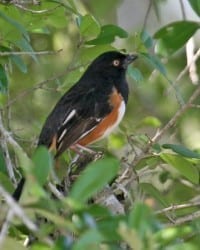
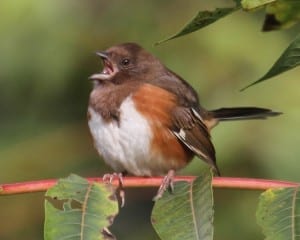
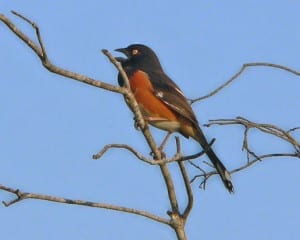
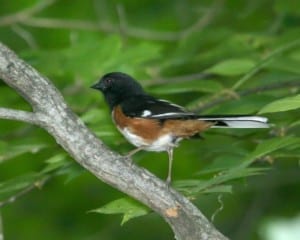
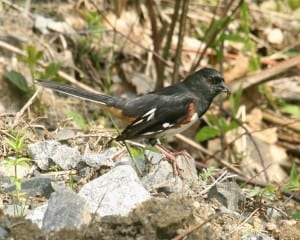
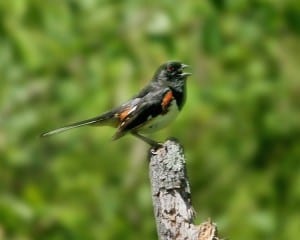
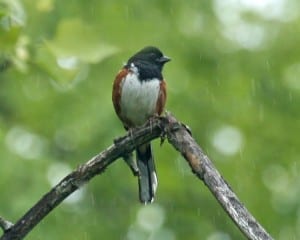
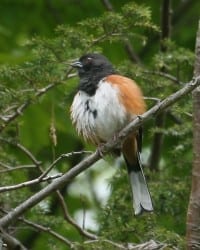


My wife saw a female Eastern Towhee at our feeder this afternoon. She identified using picture as found in Stan Tekiela’s Bird’s of Pennsylvania. Henry Renn, Lancaster County PA, West HempfieldTownship
I have had a rufous-sided or Eastern towhee at my feeder yesterday and today[April 15 & 16] in a semi-rural area near Kingston, Ontario (Canada). I have never seen one here before and we have lived here for 37 years. Could the ice storm we had on Saturday have driven him to see out feeder–lack of food on the ground?
Towhees habitually find their food by scratching in ground debris, but it is not unheard of for them to come to feeders, especially if harsh conditions such as you have described have made it difficult or impossible for them to find food on the ground. After all, they have to eat one way or another.